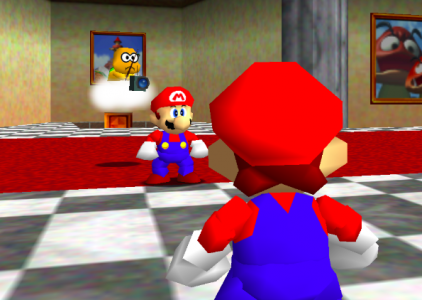Easter Egg: poetica di un patto tra autore e fruitore attento
Abstract
In the Anglo-Saxon tradition, the “Easter eggs” are the little painted eggs which are hidden on Easter day so that children can find them with a sort of treasure hunt. In the 1980s, this term was transferred to New Media, where it defines specific contents secretly hidden by an author in his/her work so that they can be found only by the attentive user through the completion of a specific series of actions. The term was coined by Steve Wright, director of software development in the Atari Consumer Electronics Division, after the company released without knowledge a hidden content inside the videogame Adventure in 1979, as a result of which the gamer could be led to the programmer’s signature. Since then, easter eggs have become more and more numerous, getting out of the mere videogame area and colonizing visual arts and mass culture. In their essence, these “surprise eggs” represent a direct line of communication between the author, who winks to his/her public like that, and the addressee who wishes to be “awarded” for his/her dedication with a hidden treasure, a symbol of their mutual respect. The two sides equally claim their own central role in the creative process, in an evolution not dissimilar to the one that brought to the rise of “authors” and signed works from the anonymous medieval crafts. Although the term was recently born, the practice of inserting more or less hidden content in works of art is indeed ancient: for example, the habit of using the features of the author itself, or of his contemporaries and friends, hidden inside the work – like the famous case of the double self-portrait that is believed having been concealed in Caravaggio’s David with the Head of Goliath, or the famous artists’ faces hidden in Raphael’s The School of Athens –, or the insertion of mysterious objects that are not immediately recognizable – like the anamorphic skull in Hans Holbein the Younger’s The Ambassadors –, or even the conceptual games used by Lewis Carroll in Through the Looking-Glass, where a keen eye notices that the told story follows the exactly development of a chess match in eight moves.
Without a sharp separation between past and contemporaneity, the “hidden treasure hunts” have always been part of the creative production, by establishing a second language, buried between the lines, between the author and his/her privileged public.

Downloads
Pubblicato
Come citare
Fascicolo
Sezione
Licenza
Copyright (c) 2023 Elephant & Castle

TQuesto lavoro è fornito con la licenza Creative Commons Attribuzione 4.0 Internazionale.





